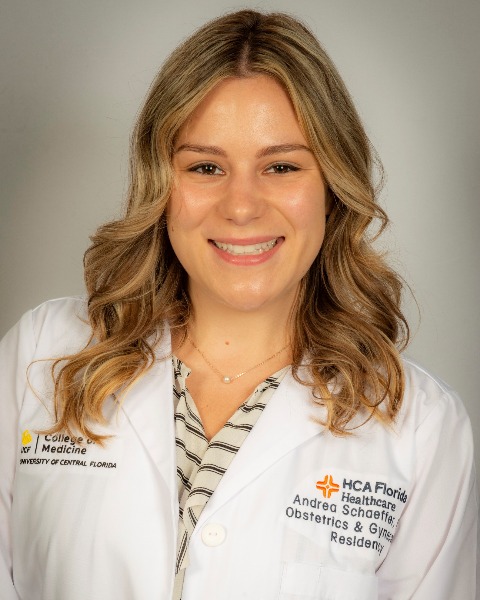Readmission Rates in Laparoscopic Sacrocolpopexy After Same Day Discharge

Andrea Schaeffer, MD (she/her/hers)
Resident
HCA Florida West Hospital
Pace, Florida, United States- LR
Lynzee I. Rittenour, DO
Resident Physician
HCA Florida West Hospital
Pensacola, Florida, United States
Poster Presenter(s)
Co-Author(s)
Objectives: Pelvic organ prolapse affects approximately 40-50% of parous women with a peak incidence at age 60-69 years. It is predicted that the prevalence of pelvic floor disorders will increase significantly with the aging population. Sacrocolpopexy is a surgical procedure used to restore pelvic organ support and can be done with or without concurrent hysterectomy. This study serves to examine the various reasons for readmission after sacrocolpopexy and compare factors that may be related to increased likelihood for readmission such as same day discharge vs admission after surgery and various medical comorbidities.
Methods: This retrospective study included women aged 18-88 years in the North Florida Division of HCA healthcare facilities who underwent benign laparoscopic sacrocolpopexy alone or sacrocolpopexy with hysterectomy. Chi-square analysis was used to compare readmission rates within 60 days based on surgery type and in patients who were discharged from the hospital on the same day of surgery versus patients with a longer length of stay. Binary logistic regression was used to examine the likelihood of readmission associated with surgery type and with same day discharge while controlling for BMI, hypertension, COPD, heart failure, and diabetes.
Results: Our study included 1742 cases. Sacrocolpopexy only cases were not found to be significantly different from sacrocolpopexy with hysterectomy cases in the likelihood of hospital or ED readmission when controlling for same day discharge, BMI, hypertension, COPD, heart failure and diabetes (p = 0.2140) (p = 0.9963). Same day discharge was significantly associated with a lower likelihood of hospital or ED readmission when controlling for surgery type and medical comorbidities (p < 0.0001). The odds of hospital readmission and ED readmission were expected to be 33.5% and 34.8% lower respectively than the odds for patients with longer length of stay when holding other variables constant. BMI was significantly associated with the likelihood of hospital and ED readmission when controlling for surgery type, same day discharge, the diagnosis of hypertension, COPD, heart failure and diabetes (p = 0.0415) (p = 0.0237). Hypertension (p = 0.0380) and Diabetes (p = 0.0254) were significantly associated with the likelihood of ED readmission when controlling for the other variables. The most common reason for readmission was urinary tract infections (12.48%).
Conclusions: There was no significant difference between likelihood of hospital or ED readmission rates between sacrocolpopexy only cases vs sacrocolpopexy with hysterectomy cases when controlling for all other variables. BMI was significantly associated with a higher likelihood of hospital and ED readmission when controlling for all other variables. Same day discharge was associated with a significantly lower risk of readmission regardless of surgery type or other medical comorbidities. Given these findings, it may be appropriate and cost-efficient for surgeons to consider combined procedures and same-day discharge for their patients undergoing sacrocolpopexy.
Methods: This retrospective study included women aged 18-88 years in the North Florida Division of HCA healthcare facilities who underwent benign laparoscopic sacrocolpopexy alone or sacrocolpopexy with hysterectomy. Chi-square analysis was used to compare readmission rates within 60 days based on surgery type and in patients who were discharged from the hospital on the same day of surgery versus patients with a longer length of stay. Binary logistic regression was used to examine the likelihood of readmission associated with surgery type and with same day discharge while controlling for BMI, hypertension, COPD, heart failure, and diabetes.
Results: Our study included 1742 cases. Sacrocolpopexy only cases were not found to be significantly different from sacrocolpopexy with hysterectomy cases in the likelihood of hospital or ED readmission when controlling for same day discharge, BMI, hypertension, COPD, heart failure and diabetes (p = 0.2140) (p = 0.9963). Same day discharge was significantly associated with a lower likelihood of hospital or ED readmission when controlling for surgery type and medical comorbidities (p < 0.0001). The odds of hospital readmission and ED readmission were expected to be 33.5% and 34.8% lower respectively than the odds for patients with longer length of stay when holding other variables constant. BMI was significantly associated with the likelihood of hospital and ED readmission when controlling for surgery type, same day discharge, the diagnosis of hypertension, COPD, heart failure and diabetes (p = 0.0415) (p = 0.0237). Hypertension (p = 0.0380) and Diabetes (p = 0.0254) were significantly associated with the likelihood of ED readmission when controlling for the other variables. The most common reason for readmission was urinary tract infections (12.48%).
Conclusions: There was no significant difference between likelihood of hospital or ED readmission rates between sacrocolpopexy only cases vs sacrocolpopexy with hysterectomy cases when controlling for all other variables. BMI was significantly associated with a higher likelihood of hospital and ED readmission when controlling for all other variables. Same day discharge was associated with a significantly lower risk of readmission regardless of surgery type or other medical comorbidities. Given these findings, it may be appropriate and cost-efficient for surgeons to consider combined procedures and same-day discharge for their patients undergoing sacrocolpopexy.
